Made In Italy: The companies that keep Italy in a league of its own
When it comes to pioneers of quality cycling gear, Italy has been and still is in a league of its own at the forefront of the industry
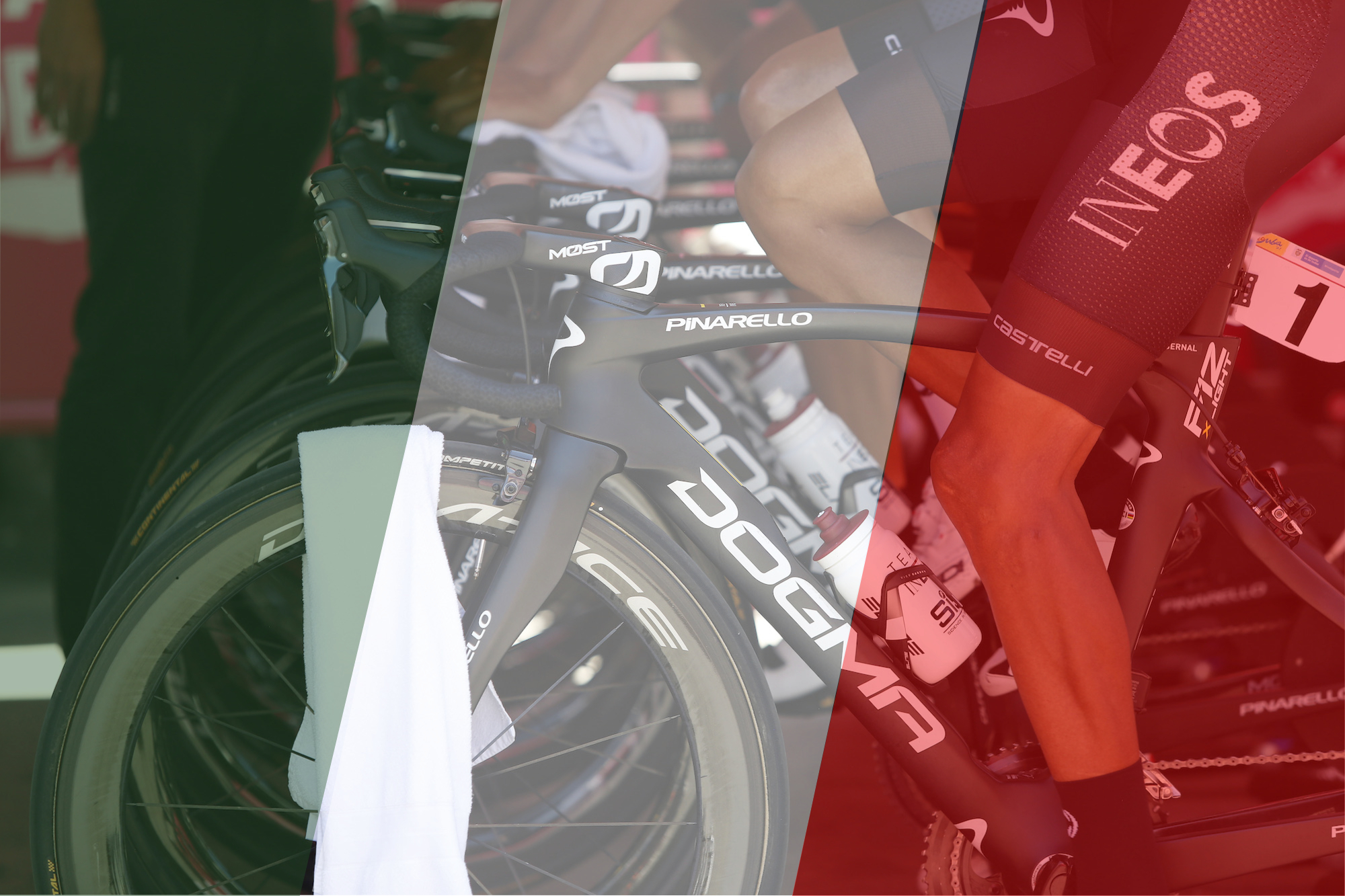
Ineos at the 2020 Tour of Colombia (Photo by Maximiliano Blanco/Getty Images)
The language of the peloton may traditionally be French but Italy has always been where the romance is.
From Fausto Coppito Ferrari, coffee culture to Colnago, the country has always inspired serious allure in anybody with a sense of style or heritage.
There's a reason Dave Stohler, the young protagonist in the cycling flick Breaking Away, couldn't get enough of spaghetti and not cottage pie.
As well as having a mile-long pedigree in style, Italy remains a global force, with most of us owning one or several pieces of Italian kit, from bikes, to finishing kit to clothing. We looked at some of the major players that most of us have either owned or lusted after in one of those green, white and red reveries so common in cyclists.
Castelli
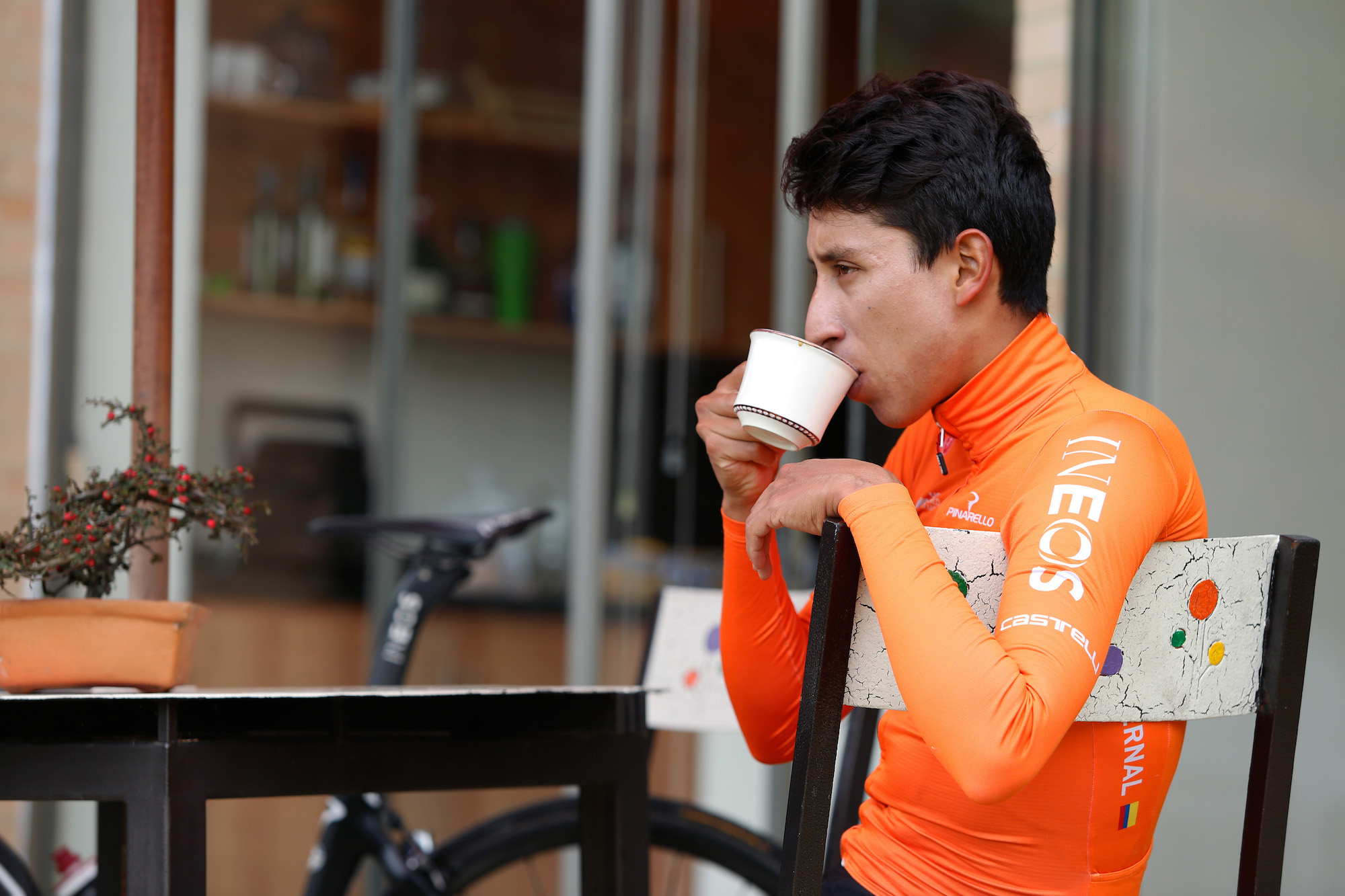
HQ: Fonzaso (Veneto)
Signature: Gabba jersey
The origins of Castelli are found in Milan, where company founder Vittore Gianni produced clothes for the city's football teams and ballet. The company was eventually bought by Armando Castelli in 1939, by which time it was an established cycling supplier, trading under the Gianni name. But, having watched his father grow up around pro bike racers, Armando's son Maurizio wanted to experiment and innovate outside the confines of Gianni's conservative brief, and in 1974 he formed his own breakaway company, complete with the scorpion logo - the Castelli we know today.
Soon after its formation, Maurizio Castelli achieved his first of many - consumer Lycra cycling shorts, and pioneered synthetic chamois pads shortly after that. Today the company remains ultra-relevant, supplying Team Ineos with their kit. But it is arguably best known for the often-imitated Gabba rainproof jersey, launched 10 years ago and now a key item in the wardrobes of many riders.
Bianchi

Formed: 1885
HQ: Treviglio (Lombardy)
Signature: Celeste
Having set up shop in 1885, Bianchi has been around some considerable time. There are many historical bike companies, but none more recognisable than the Treviglio brand, whose minty green-blue signature paint job has become a cycle sport icon.
The colour even has a romantic legend behind it: founder Edoardo Bianchi was commissioned to supply bikes to Queen Margherita and was so taken with the colour of her eyes that he had the bikes painted in the same hue.
Others say it is simply the colour of the sky above Milan, while Bianchi itself, not wanting to burst the bubble, claims "the truth is, there are many truths".
Over the years Bianchi has been the brand of choice for Fausto Coppi and Marco Pantani, and it retains a foothold at the highest level today, keeping pace with Italian rival brands by supplying the successful Jumbo-Visma WorldTour team.
Cinelli
Formed: 1948
HQ: Milan (Lombardy)
Signature: 1A quill stem
Cinelli's latest flagship product is a bike called the Nemo Zagato. It's a road bike in a limited run of 100, crafted from Columbus Omnicrom steel, complete with polished nickel finish. The link to Zagato - a prestigious Italian automotive design house - is illustrated perfectly by photos of the bike side-by-side on a motor racing circuit with a classic Alfa Romeo.
Actually, it sums up Italian cycling pretty well - style is definitely the equal of substance, and motor racing heritage is never too far away.
>>> Subscriptions deals for Cycling Weekly magazine
The company, formed in 1948 by former Milan-San Remo winner Cino Cinelli, was better known for its componentry, and there weren't many Seventies and Eighties roadies who didn't lust after the exquisite, polished alloy lines of a 1A (still available) or XA quill stem.
Colnago
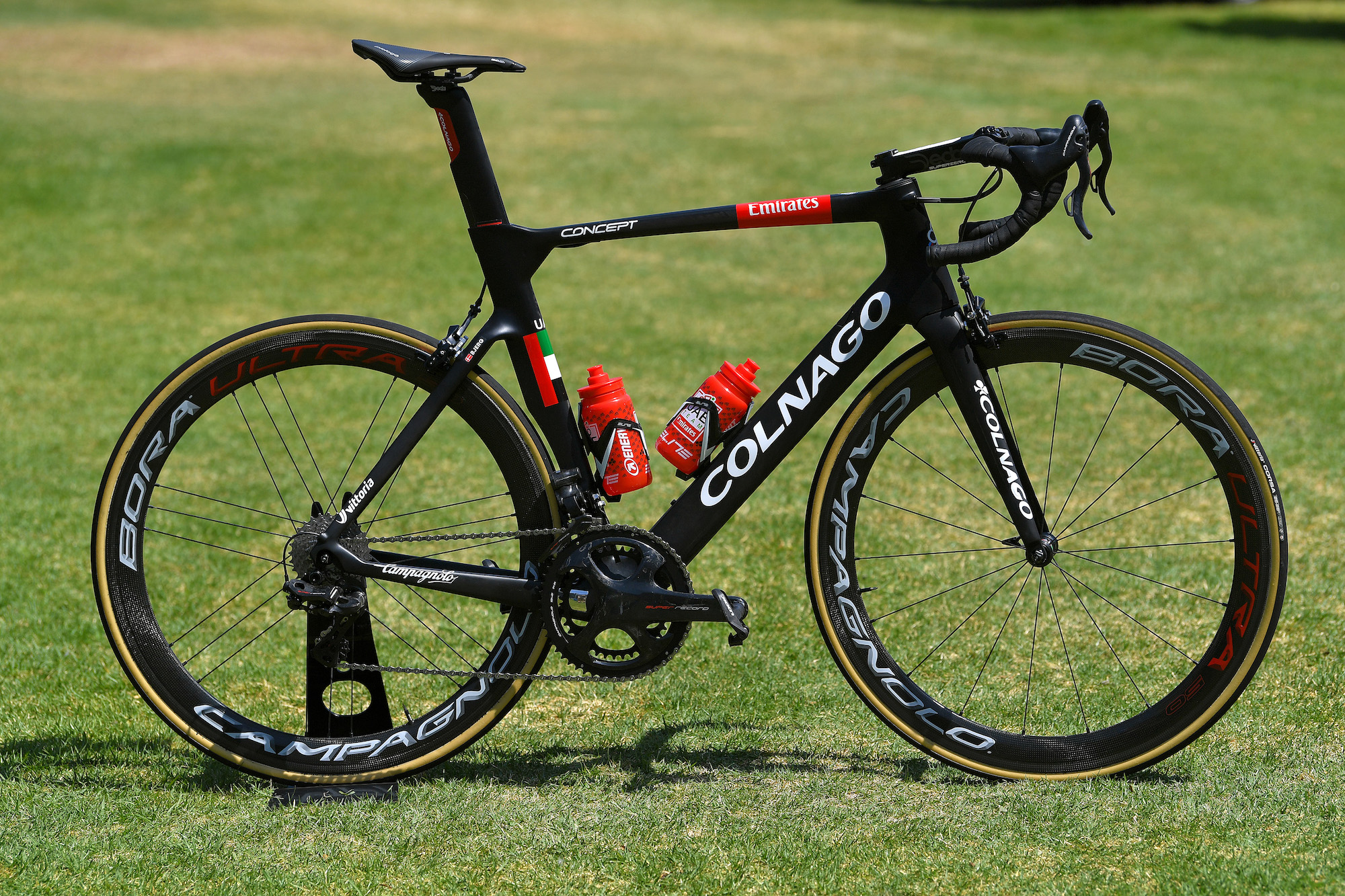
Formed: 1954
HQ: Cambiago (Lombardy)
Signature: C40
Give a cyclist a choice of any Italian bike - any bike at all even - and many would pick a Colnago. The Milan company is arguably the most prestigious bike brand on the market, perhaps as a result of having won so many important races and titles - not to mention an enduring attachment to Eddy Merckx.
Take a poke around the small, but perfectly formed museum on the upper floor of the company headquarters, and you will find the evidence - a true Aladdin's cave of bicycles going back nearly 50 years. Merckx's iconic 1972 Hour Record bike, while being simple and a little tatty, with tyres hanging off in shreds, is surely the centrepiece. But Giuseppe Saronni's Worlds-winning bike from Goodwood is also there, as is Franco Ballerini's Paris-Roubaix-winning C40 from 1998 - still covered in the mud of northern France, it's still possibly the most evocative machine in the collection.
But Colnago is not just about history - it remains very much relevant, sponsoring UAE Team Emirates and already boasting 11 WorldTour wins this year with riders like Tadej Pogača and Fernando Gaviria.
The company was even in the news during the writing of this feature, having sold a majority share to Abu-Dhabi-based investment fund Chimera Investments.
Wilier Triestina
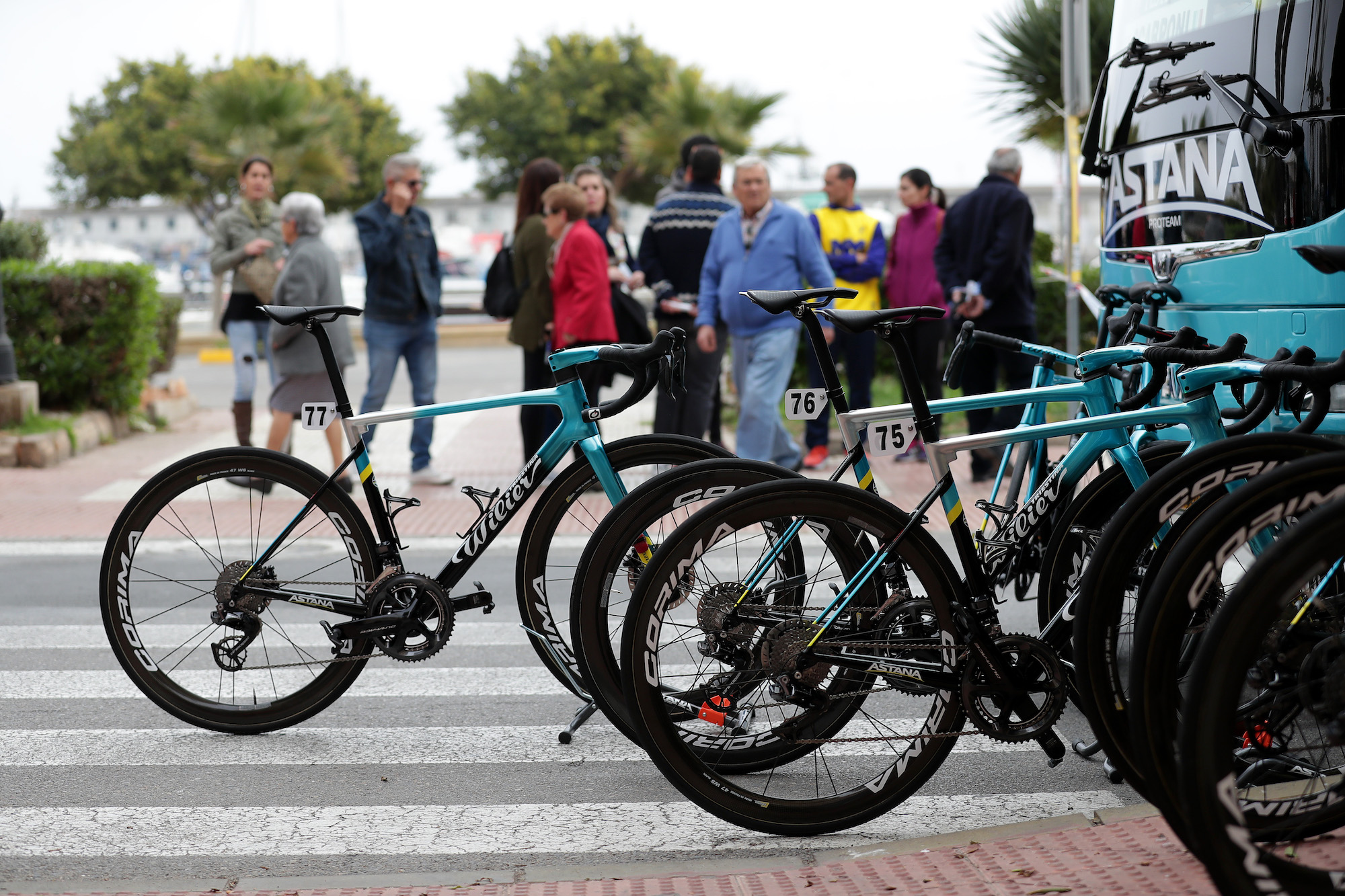
Formed: 1906
HQ: Rossano (Veneto)
Signature: Worlds-winning Cento
This most Italian of companies has English roots. The original owner, Pietro Dal Molin, bought what is described on Wilier's website as "an almost unknown English brand, Wilier" way back in 1906 in order to begin his own company in Bassano del Grappa in the Veneto region.
Two wars passed before Dal Molin, whose bikes had been used by the Italian infantry, entered the pro cycling scene with a team called Wilier Triestina - named after the city of Trieste.
Without wartime demand for infantry bikes, it wasn't long before Wilier came unstuck: in 1952, after a non-payment for a shipment of machines, the company closed. It was another 18 years before the Wilier factory was raised from the dead and bought by brothers Lino and Antonio Gastaldello, and Wilier Triestina was given a second wind.
It many not have the presence of Colnago or Bianchi, but it is well re-established, with a foothold in the WorldTour under the riders of Astana.
Selle San Marco
Formed: 1935
HQ: Asolo (Vento)
Signature: Rolls saddle
Most bike riders will know what its like to find themselves halfway round a long ride with a sore butt, and there;s not really a better illustration of how important a component the saddle is. However, with it being mostly hidden by a backside, it's also the component least on show.
Thankfully, that hasn't stopped companies like Selle San Marco (selle means saddles) from elevating the saddle to a piece of art to outshine most of its other finishing-kit rivals.
>>> Cycling Weekly is available on your Smart phone, tablet and desktop
San Marco's Rolls, developed in the early Eighties, is the perfect example of this. It was available in a variety of colours, but it was surely the mottled black leather version, rimmed with a gold band and rails and finished off with the diamond shaped Rolls logo, that was the icon.
And there are others. Many of us will recognise the riveted Regal, or the bold rear logo of the original Concor, both of which, like the Rolls, are still available to buy new today.
Santini
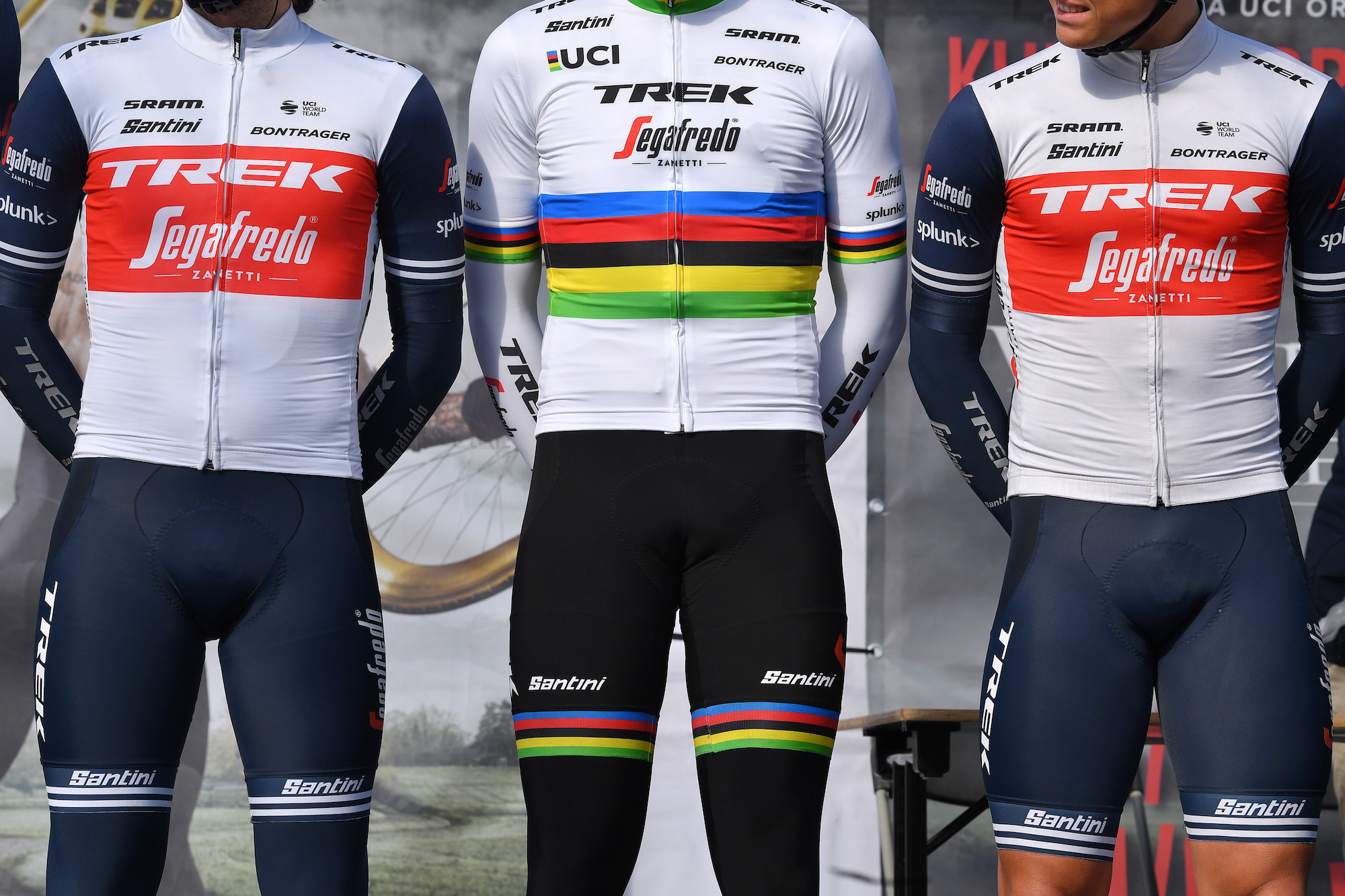
Formed: 1965
HQ: Lallio (Lombardy)
Signature: The rainbow bands
If you're a member of a cycling club, you may already own some Santini kit, perhaps unwittingly - not everybody would necessarily know that the brand's longstanding 'SMS' logo stands for Santini Maglificio Sportivo. Making club kit to order is a key part this modestly sized, family-run firm's remit.
Considerably more sexy though, is the fact that Santini has also been quietly responsible for producing many of cycling's most iconic jerseys over the past few decades. Its logo is the one you will have seen on the majority of Giro d'Italia leaders' jerseys over the past 30 years, as well as on the rainbow bands of many world champions during that same period - though if you check Mads Pedersen's Worlds jersey from last year, you'll see the new logo is a less coy 'Santini'. It also sponsors Trek-Segafredo and worked with Lizzie Deignan on the 'Lizzie x Santini' kit range.
Formed in 1965 by Pietro Santini and now run by daughters Monica and Paola, the company is located in Lombardy, nestled up against the foothills of the Alps just outside Bergamo.
Pinarello

Formed: 1953
HQ: Treviso (Veneto)
Signature: Dogma
In 1951 Giovanni Pinarello, a useful bike racer, rode into Milan on the final stage of the Giro d'Italia clad in the maglia nera (black jersey) of last rider in the race - a position he had fought to hold on to for the recognition it would bring. For modern fans used to seeing Pinarellos being ridden victorious into Paris under various members of Team Sky, Giovanni's black jersey story seems a little at odds with where the company he founded finds itself today. That is unlikely to have troubled Giovanni, who passed away in 2014 having lived to see both Bradley Wiggins and Chris Froome win the Tour de France on his bikes.
Of course, he may have enjoyed watching Miguel Indurain win the Giro d'Italia in the 1990s on one of his bikes even more.
The company's modern machines are easily recognisable for their wavy fork profiles and in-house MOST finishing kit. But the word on the lips of any fan of Pinarello 0 or indeed Team Ineos - is Dogma. The British team has been using these machines, and been winning Grand Tours on them, since 2011. If you fancy owning the latest model, the F12, £12,000 is what you'll need to beg your bank manager for.
Campagnolo
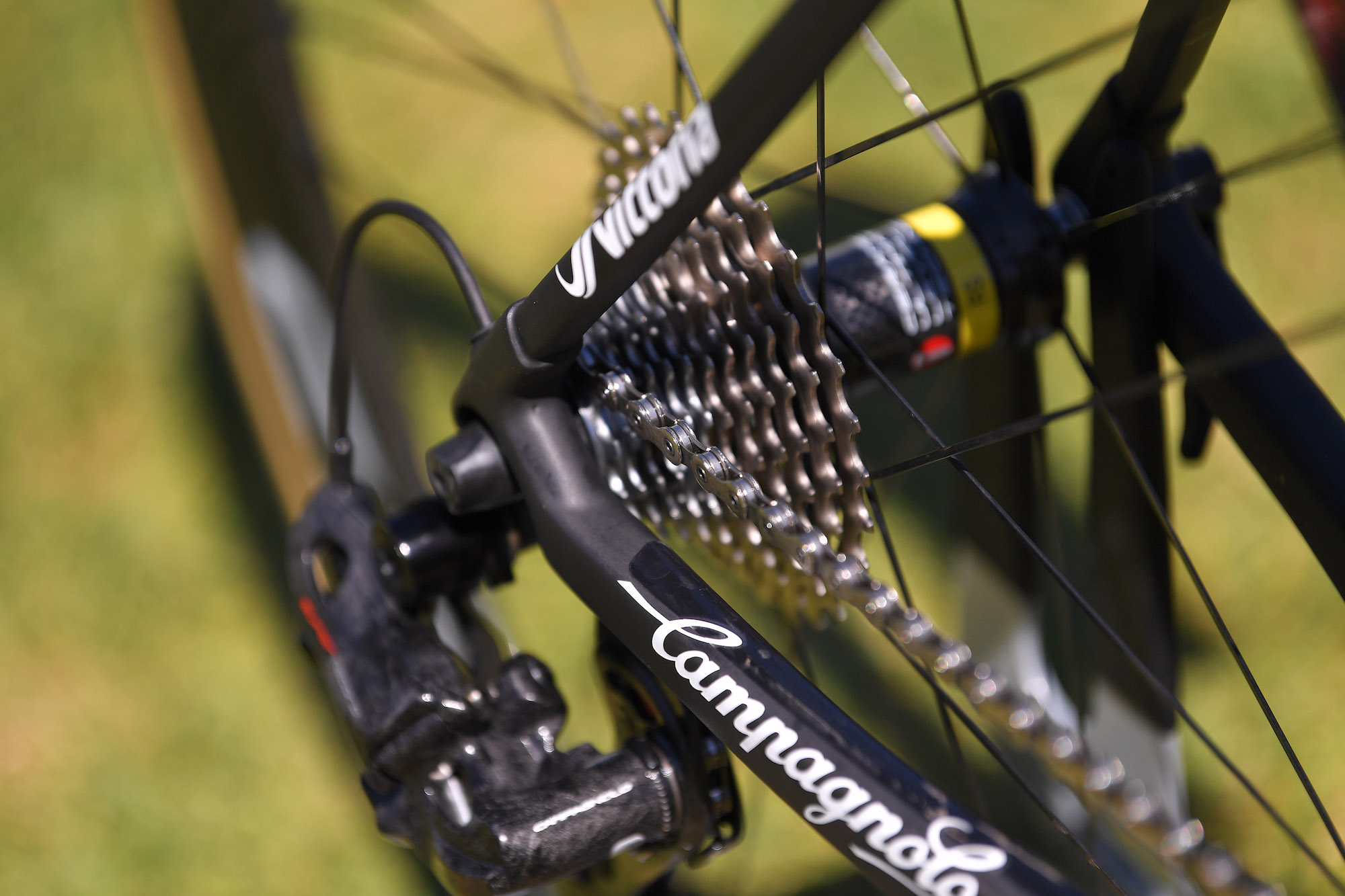
Formed: 1933
HQ: Vicenza (Veneto)
Signature: Super Record groupset
For many years, Campagnolo was seen as componentry for the connoisseur, a beautiful and artisan anecdote to Shimano's clinical efficiency. "Campag wears in, Shimano wears out" is the saying - except it isn't anymore because the Italian gruppo has become far less used.
But while 'Campy' no longer has the market share it used to, it is still used in the WorldTour by UAE, Cofidis and Lotto-Soudal, and with a 12-speed electronic disc groupset, it's up to date.
Many of Campagnolo's products have been works of art. Few would deny that the sleek, polished and almost delicate lines of some of its groupset items are irresistible. There's a reason a decent example of its Delta brake can sell for a four-figure sum. Add to this a compelling 1920s backstory involving a young Tullio Campagnolo inventing the quick-release after getting stranded during a race, and you have an iconic brand that is set to endure.
This feature originally appeared in the print edition of Cycling Weekly, on sale in newsagents and supermarkets, priced £3.25.

Thank you for reading 20 articles this month* Join now for unlimited access
Enjoy your first month for just £1 / $1 / €1
*Read 5 free articles per month without a subscription

Join now for unlimited access
Try first month for just £1 / $1 / €1
Get The Leadout Newsletter
The latest race content, interviews, features, reviews and expert buying guides, direct to your inbox!
Having trained as a journalist at Cardiff University I spent eight years working as a business journalist covering everything from social care, to construction to the legal profession and riding my bike at the weekends and evenings. When a friend told me Cycling Weekly was looking for a news editor, I didn't give myself much chance of landing the role, but I did and joined the publication in 2016. Since then I've covered Tours de France, World Championships, hour records, spring classics and races in the Middle East. On top of that, since becoming features editor in 2017 I've also been lucky enough to get myself sent to ride my bike for magazine pieces in Portugal and across the UK. They've all been fun but I have an enduring passion for covering the national track championships. It might not be the most glamorous but it's got a real community feeling to it.
-
 Trek, State and Specialized raise bike prices while other brands limit US releases — Is this just the beginning?
Trek, State and Specialized raise bike prices while other brands limit US releases — Is this just the beginning?As tariffs hit, the bike industry is forced to adapt, whether through price increases, limited releases, or a restructuring of supply chains
By Anne-Marije Rook
-
 How I got my non-cyclist friend hooked on riding bikes — and how you can, too
How I got my non-cyclist friend hooked on riding bikes — and how you can, tooWith a little bit of gentle guidance, “bikes aren’t my thing” can turn into “when’s our next ride?”
By Marley Blonsky